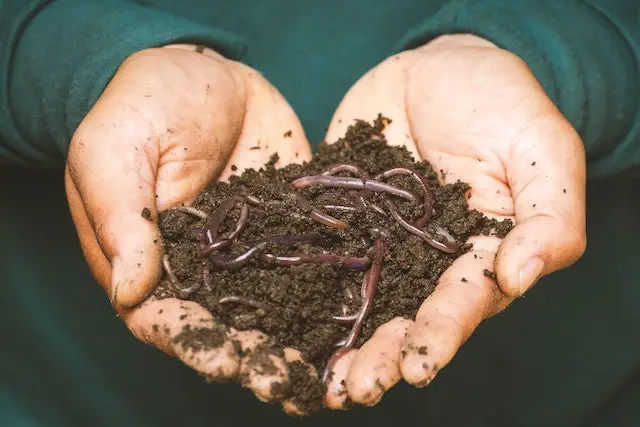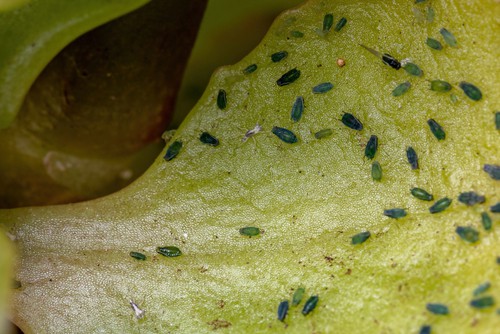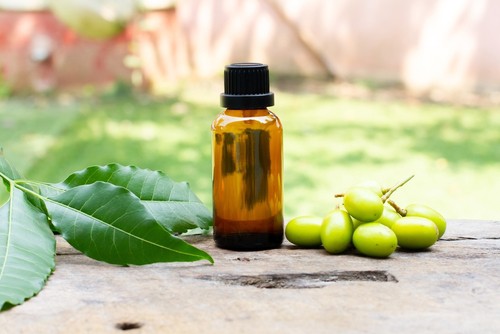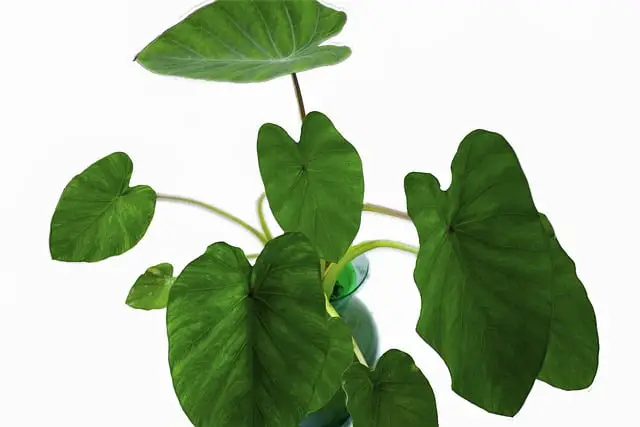Elephant ear plants are a popular choice for indoor and outdoor gardening enthusiasts alike. These tropical plants are known for their large, distinctive leaves that resemble the ears of an elephant. However, some gardeners may notice that their beloved elephant ear turning brown, which can be a cause for concern.
There are several reasons why elephant ear leaves may turn brown, including environmental factors, pests, and diseases. Understanding the causes of browning in elephant ear plants is crucial to maintaining their health and beauty.
By identifying the underlying issue, gardeners can take preventive measures and implement solutions to ensure their plants thrive.
Key Takeaways
- Elephant ear leaves may turn brown due to a variety of causes, including environmental factors, pests, and diseases.
- Understanding the specific symptoms of browning in elephant ear plants is crucial to identifying the underlying issue.
- By taking preventive measures and implementing solutions, gardeners can maintain the health and beauty of their elephant ear plants.
Also don’t miss:
- Mango Tree Leaves Turning Brown and Curling
- Magnolia Leaves Turning Brown in Spring
- Loropetalum Leaves Turning Brown
Understanding the Elephant Ear Plant

The elephant ear plant, also known as Colocasia or taro, is a tropical plant that is native to Southeast Asia. It is a popular houseplant due to its large, striking leaves that can grow up to 3 feet long and 2 feet wide.
The elephant ear plant is a member of the Araceae family, which includes other popular houseplants such as the peace lily and philodendron. It is a perennial plant that can grow up to 6 feet tall in the right conditions.
The plant has a tuberous root system that stores nutrients for the plant to use during growth. The leaves of the elephant ear plant are the main attraction, with their large size and unique shape. They can be green, variegated, or even black in color.
The elephant ear plant is a popular choice for indoor plants due to its ease of care and striking appearance. It prefers bright, indirect light and moist soil. Overwatering can lead to root rot, while underwatering can cause the leaves to turn brown and dry out.
In addition to being a beautiful houseplant, the elephant ear plant has also been used for culinary purposes in many cultures. The tuberous root is used to make a starchy flour, while the leaves are used in dishes such as taro chips and poi.
Elephant Ear Turning Brown
Elephant ear plants are known for their striking foliage, but sometimes their leaves can turn brown, which can be a cause for concern. Here are some common causes of browning in elephant ear plants:
1. Environmental Factors
Direct sunlight can cause elephant ear leaves to turn brown, especially in hot, dry weather. Too little humidity can also lead to browning, as can extremely low humidity. Cold temperatures can also damage the leaves.
2. Watering Issues
Overwatering or underwatering can cause elephant ear leaves to turn brown. Inconsistent watering can also lead to browning, as can drought conditions. Signs of overwatering include yellowing leaves and a mushy stem, while signs of underwatering include dry soil and wilting leaves.
3. Nutrient Deficiencies

Lack of nutrients, particularly nitrogen, can cause elephant ear leaves to turn brown. Fertilizer burn can also damage the leaves.
4. Soil Problems
Soil conditions can also cause elephant ear leaves to turn brown. Rocky soil or soil that is too compacted can prevent proper drainage, leading to overwatering. Potting soil that is too dense can also lead to overwatering.
5. Acclimation
If an elephant ear plant is moved from one location to another, it may experience acclimation issues, which can lead to browning. This is particularly true if the plant is moved from a low light to a high light area.
6. Leaf Burn and Drying Out
In high light, elephant ear leaves may get burnt along the edges, leading to browning. This won’t kill the plant but does affect the appearance of the foliage, which is the focal point of the ornamental plant.
Signs of Diseases and Pests
Elephant ear plants are susceptible to various diseases and pests that can cause their leaves to turn brown. Here are some signs to look out for:
Diseases
- Fungal diseases: Fungal diseases like powdery mildew, bacterial leaf spot, and fungal leaf blight can cause brown spots or patches on the leaves of elephant ear plants. These diseases are often accompanied by a fuzzy or powdery growth on the leaves.
- Pythium rot: Pythium rot is a fungal disease that can cause the roots of elephant ear plants to rot, leading to brown leaves and wilting. This disease is often caused by overwatering or poorly-draining soil.
- Root damage: Damage to the roots of elephant ear plants can lead to brown leaves and stunted growth. This can be caused by overwatering, underwatering, or physical damage to the roots.
Pests

- Spider mites: Spider mites are tiny pests that can suck the sap from the leaves of elephant ear plants, causing them to turn brown and dry out. Look for fine webbing on the undersides of the leaves as a sign of infestation.
- Aphids: Aphids are small, soft-bodied insects that feed on the sap of elephant ear plants, causing the leaves to curl and turn brown. Look for clusters of small, green or black insects on the undersides of the leaves.
- Mealybugs: Mealybugs are small, white, cottony insects that can infest the leaves and stems of elephant ear plants, causing them to turn brown and wilt. Look for white, cottony masses on the undersides of the leaves as a sign of infestation.
If you notice any of these signs on your elephant ear plant, it’s important to take action quickly to prevent further damage. Removing affected leaves, improving drainage, and treating with appropriate insecticides or fungicides can help control the spread of disease and pests.
Effects of Environmental Factors
Elephant ear plants are sensitive to various environmental factors that can cause their leaves to turn brown. Understanding these factors can help prevent and address leaf browning.
1. Humidity
Elephant ear plants thrive in a humid environment. A lack of humidity can cause the leaves to dry out and turn brown. To increase humidity, consider using a humidifier or placing a tray of water near the plant. Alternatively, misting the plant with water can also help increase humidity.
2. Temperature
Extreme temperatures can also cause elephant ear leaves to turn brown. High temperatures can cause the leaves to dry out, while cold temperatures can damage the plant. Elephant ear plants prefer temperatures between 65-85°F (18-29°C).
3. Light
Elephant ear plants require bright, indirect light to thrive. Too much direct sunlight can cause the leaves to burn and turn brown. On the other hand, too little light can cause the leaves to yellow and brown. It’s best to place the plant in an area with bright, indirect light.
4. Photosynthesis
Photosynthesis is the process by which plants convert light into energy. Elephant ear plants require adequate light for photosynthesis to occur. Without enough light, the plant may not be able to produce enough energy to support healthy leaf growth.
Preventive Measures and Solutions

To prevent brown leaves on the elephant ear plant, it is important to identify the causes of elephant ear leaves turning brown. One of the most common reasons for this issue is overwatering or poor drainage. To avoid this, it is recommended to use well-draining soil and ensure that the pot has drainage holes.
Another way to prevent brown leaves on the elephant ear plant is to be mindful of the irrigation water. Make sure that the water you are using is not too cold or too hot, as extreme temperatures can damage the leaves. Use room temperature water and avoid using hard water, as it can cause mineral buildup in the soil.
Neem oil is an effective solution for preventing brown leaves on the elephant ear plant caused by pests. It is a natural insecticide that can be sprayed on the leaves to deter insects from feeding on them. However, it is important to use neem oil in moderation, as overuse can harm the plant.
Pruning is another preventive measure that can help keep the elephant ear plant healthy and prevent brown leaves. Remove any damaged or discolored leaves as soon as you notice them, as they can attract pests and diseases. Prune the plant regularly to promote healthy growth and prevent overcrowding.
Lastly, it is important to note that the elephant ear plant is a heavy feeder. It requires regular fertilization to maintain healthy growth and prevent brown leaves. Use a balanced fertilizer with equal amounts of nitrogen, phosphorus, and potassium.
Apply the fertilizer every two weeks during the growing season, and reduce the frequency during the dormant season.
Specific Conditions and Their Symptoms
Elephant ear plants are known for their large, ornamental leaves that can add a tropical feel to any garden or indoor space. However, when the leaves start to turn yellow or brown, it can be a sign of underlying issues. Here are some specific conditions and their symptoms that may cause elephant ear leaves to turn brown:
1. Leaf Burn
Leaf burn is a common problem that can cause elephant ear leaves to turn brown. This happens when the plant is exposed to direct sunlight for extended periods or when the temperature is too high. The leaves may develop yellow spots or brown edges, and the foliage may wilt or droop.
2. Overwatering

Overwatering is another common cause of brown leaves in elephant ear plants. When the soil is kept too wet, it can lead to root rot and other fungal diseases. The leaves may turn yellow or brown, and the foliage may become soft and mushy.
3. Underwatering
On the other hand, underwatering can also cause elephant ear leaves to turn brown. When the soil is too dry, the leaves may start to wilt and turn yellow or brown. The foliage may also become crispy and brittle.
4. Edema
Edema is a condition that occurs when the plant takes in more water than it can use. This can cause the leaves to develop small, water-filled blisters that eventually turn brown. The leaves may also become distorted or misshapen.
5. Nutrient Deficiency
Elephant ear plants need a balanced diet of nutrients to thrive. When they don’t get enough of certain nutrients, such as nitrogen or magnesium, the leaves may start to turn yellow or brown. The foliage may also become stunted or distorted.
Frequently Asked Questions
How do I treat brown spots on elephant ears?
Brown spots on elephant ear leaves can be caused by a variety of factors, including overwatering, underwatering, and fungus. To treat brown spots, first identify the cause. If the cause is overwatering, reduce watering frequency and ensure proper drainage.
If the cause is underwatering, increase watering frequency and ensure the soil is moist but not waterlogged. If the cause is fungus, remove affected leaves and treat the plant with a fungicide.
Should I cut off yellow elephant ear leaves?
Yellow elephant ear leaves can be a sign of both overwatering and underwatering. If the cause is overwatering, cut off yellow leaves and reduce watering frequency.
If the cause is underwatering, cut off yellow leaves and increase watering frequency. It’s important to note that yellow leaves cannot be revived and should be removed to prevent the spread of disease.
What Causes fungal leaf blight elephant ear?
Fungal leaf blight is a common disease that affects elephant ear plants. It appears as brown spots on the leaves and can be treated with a fungicide. To prevent fungal leaf blight, avoid overwatering and ensure proper drainage.
Why is there rust on my elephant ear plants?
Rust on elephant ear plants is caused by a fungus and appears as orange-brown spots on the leaves. To treat rust, remove affected leaves and treat the plant with a fungicide. To prevent rust, avoid overwatering and ensure proper drainage.
How do I revive my elephant ear plant?
If your elephant ear plant is wilting or dying, it may be due to underwatering or overwatering. To revive the plant, first identify the cause and adjust watering accordingly. It’s also important to ensure the plant is in an appropriate location with proper lighting and temperature.
What are the types of elephant ear plants?
There are several types of elephant ear plants, including Colocasia, Alocasia, and Xanthosoma. Colocasia has heart-shaped leaves and is commonly known as taro. Alocasia has arrow-shaped leaves and is commonly known as elephant ear.
Xanthosoma has spear-shaped leaves and is commonly known as malanga. Each type of elephant ear plant has its own unique characteristics and care requirements.

Hey, I’m Lisa and I’ve been an avid gardener for over 30 years. I love writing, talking and living in the garden! Feel free to connect with me on my socials below


